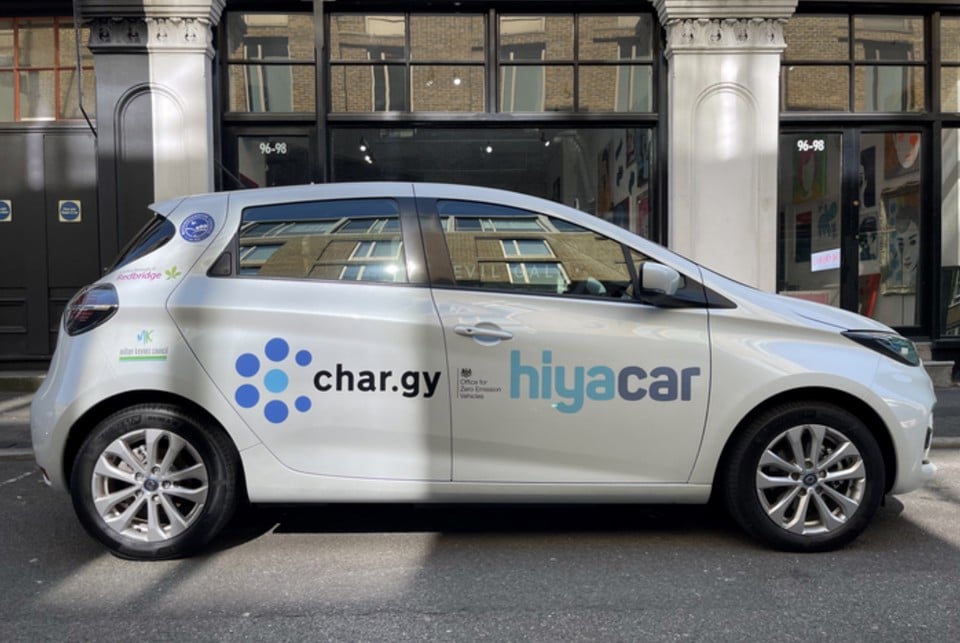The race to net zero and increasing financial pressures make the public sector ripe for rethinking mobility.
Car sharing technology is leading the way by helping public sector organisations cut emissions by as much as 70% while reducing fleet costs by up to 50%.
Hiyacar’s car-sharing platform is a pivotal example of helping organisations like Norfolk Community Health, Care NHS Trust and Waltham Forest Council to manage staff travel more sustainably, effectively, and economically.

Here, Sam Dewhurst, head of public sector at Hiyacar, offers five examples of how car sharing is driving the public sector mobility green:
1. Reducing Grey Miles and Transitioning to Green Pool Cars
In many public sector organisations, “grey miles” — miles driven by employees using personal vehicles for business purposes — are a primary contributor to fleet costs and emissions. Grey miles often go unmonitored and can lead to higher reimbursement costs and vehicle-related emissions. Car-sharing technology allows organisations to move away from grey fleet dependency by actively encouraging staff to choose dedicated pool cars, which are more cost-effective and environmentally friendly.
By offering pool cars that are managed within a car-sharing platform, organisations can ensure employees are using low-emission or electric vehicles for work purposes. By encouraging staff to use dedicated pool cars, organisations can ensure these vehicles are well-maintained, fully insured, and in optimal condition for each journey. This shift not only reduces emissions and streamlines mileage tracking but also provides more predictable, lower-cost transportation options. Car sharing further lowers costs by improving staff retention and easing recruitment, as employees no longer need to own or maintain a grey fleet vehicle for work, making roles more accessible and appealing. Additionally, it reinforces duty of care by guaranteeing that employees are driving vehicles that meet the organisation’s safety and compliance standards which often goes overlooked.
2. Sweating the Assets: Maximising Utilisation of Existing Vehicles
Organisations within the public sector are often required to maintain large vehicle fleets that may remain underutilised due to fragmented use across departments or inflexible scheduling. Car-sharing platforms make it possible to “sweat the assets” by increasing the utilisation rate of existing vehicles. With a digital platform that provides real-time visibility and access, fleet managers can identify underused vehicles and reassign them across departments, transferring grey miles to pool cars, ensuring full utilisation whilst creating a cost saving.
3. Lowering Commuter Emissions and Supporting Green Initiatives
Many employees in public sector organisations rely on single occupancy personal vehicles to commute, which contributes to greenhouse gas emissions and congested urban roads. Hiyacar has found that by providing pool vehicles, organisations are encouraging active travel — like cycling or walking — or the use of public transportation for the majority of an employee’s commute, knowing they have a reliable pool car available at their base or closer to home for work-related travel. This flexibility can reduce the need for multiple household vehicles, as employees rely less on personal cars, easing the financial burden on both staff and the organisation.
4. Creating a Culture of Sharing Across Departments
In the past, many departments within public organisations relied heavily on rental cars, taxis, or grey fleet options to meet their transportation needs, leading to siloed, inefficient travel. Car-sharing technology fosters a culture of sharing by providing inter-departmental access to a pool of vehicles. This approach replaces traditional car rentals or taxis with a flexible fleet that any department can access, leading to better resource allocation and collaboration.
A car-sharing platform like Hiyacar allows public sector organisations to set up customised “ringfences”, so vehicles can be allocated based on departmental priorities or specific projects. This ring fencing ensures that vehicles are available when and where they’re most needed while still promoting an open, collaborative model. By breaking down the age-old “This is my team's vehicle” and encouraging vehicle sharing, public sector bodies can achieve higher efficiency, cost savings, and a more cohesive approach to mobility.
5. Utilising Technology to Streamline Operations and Maximise Efficiency
The technology underpinning car-sharing platforms offers multiple advantages beyond simple vehicle access. With features such as real-time vehicle tracking, automated booking / cancellations, inspection photos and keyless entry, car-sharing platforms provide a seamless experience for users while giving fleet managers granular insights into usage patterns and efficiency. The addition of driver behaviour monitoring technology embedded into the platform can also address non eco-friendly driving habits, such as harsh braking and speeding, promoting safer and more efficient vehicle use. This level of control enables fleet managers to optimise vehicle usage, better anticipate demand, and schedule maintenance without disrupting availability.
Dewhurst said: “As a former NHS transport manager, I’ve seen first-hand the strain that traditional fleet management can place on both budgets and sustainability efforts. Car sharing technology offers a much-needed solution by empowering organisations to make better use of their existing vehicles, reduce reliance on private and rental cars, and make meaningful strides towards their environmental goals.”






















Login to comment
Comments
No comments have been made yet.